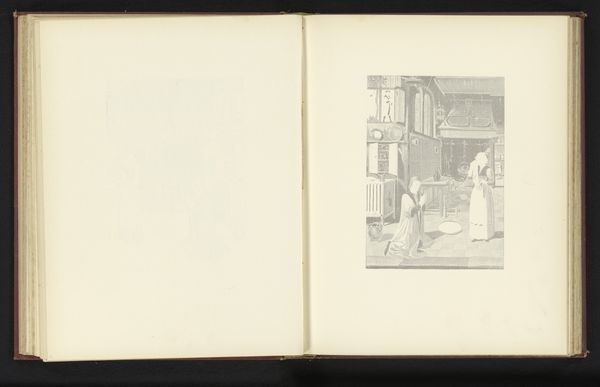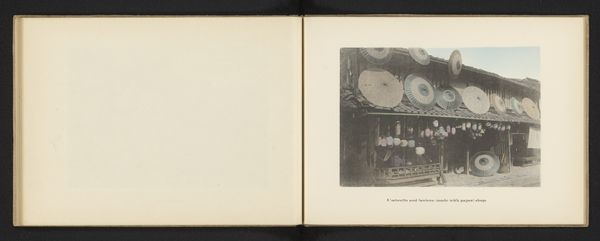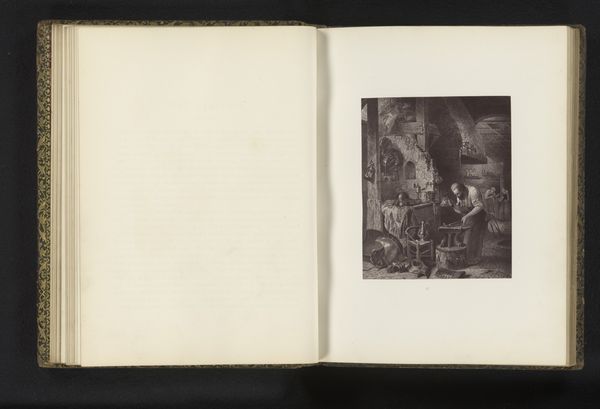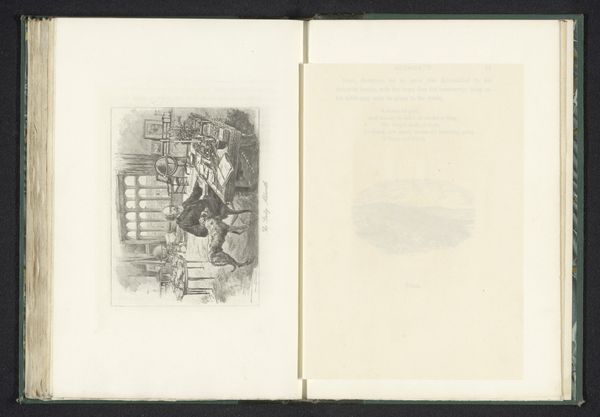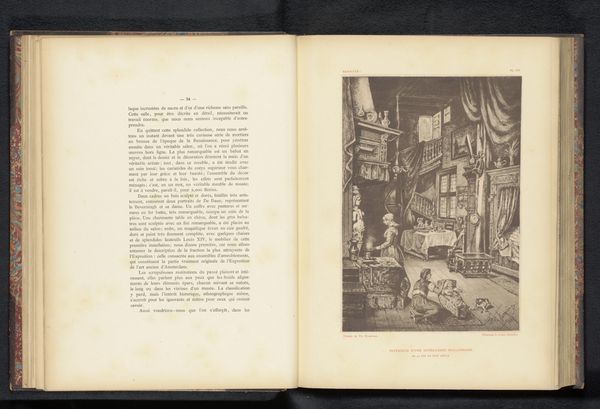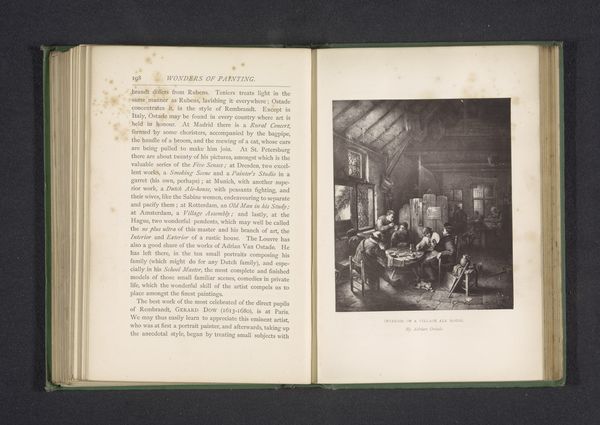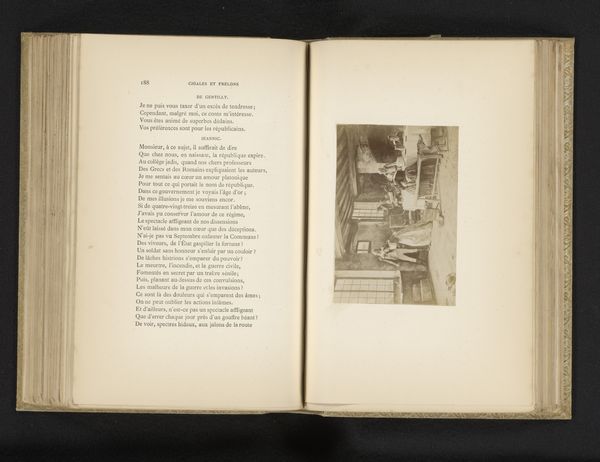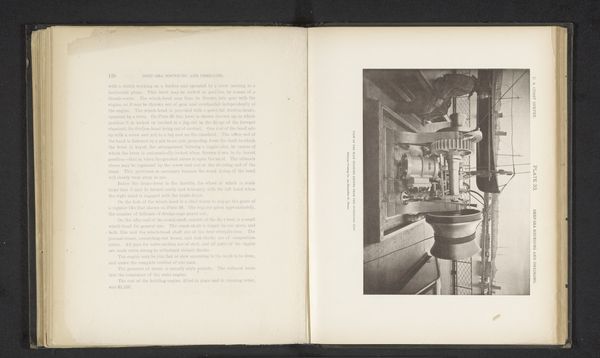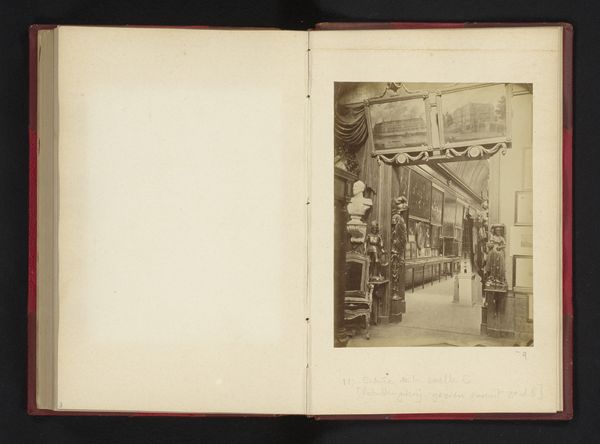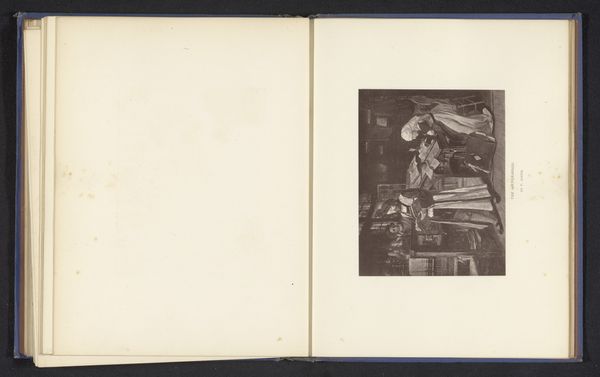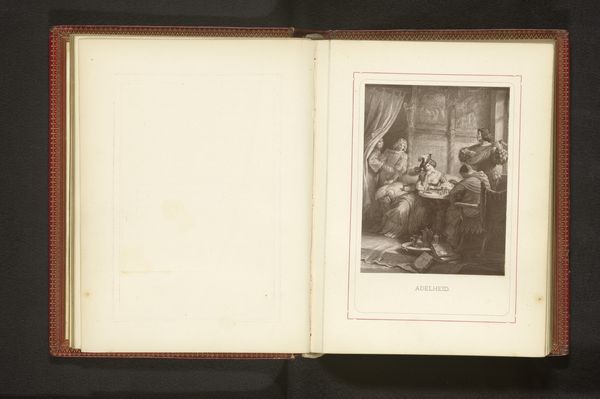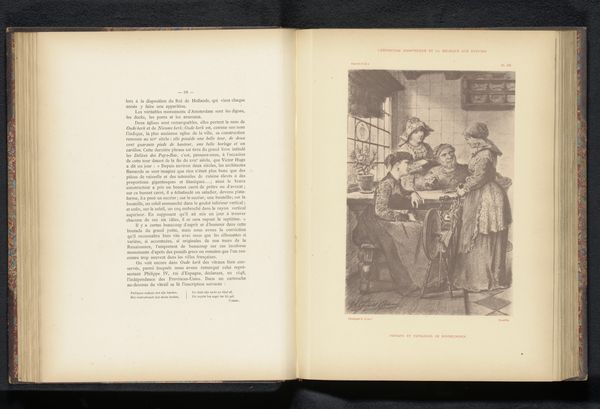
Dimensions: height 137 mm, width 119 mm
Copyright: Rijks Museum: Open Domain
Editor: This is a print called "The Book Stall," made before 1872, currently housed at the Rijksmuseum. It appears to be an engraving. It’s got this dense, almost claustrophobic feeling, even though it depicts a street scene. The details are incredible for a print. How do you read the composition of this piece? Curator: What strikes me is the use of light and shadow to define the architectural space. Note how the artist employs chiaroscuro, not just to model forms, but to structure the entire composition. The light doesn't fall naturally, instead acting almost as a spotlight. What purpose do you think this serves, formally? Editor: I suppose it draws your eye to specific details, the people, the books… highlighting those elements in a world of grays and blacks. Like a narrative emphasis through lighting. But how does that impact the overall reading of the space? Curator: Precisely. The deep blacks in the upper areas create a strong verticality that presses down, while the lighter pavement gives some spatial release, forcing the viewer to reconcile this sense of compression with the horizontal spread of the stall itself. The semiotic effect evokes curiosity while restricting an easy journey through the picture. Do you agree? Editor: Yes, I see what you mean. It’s almost uncomfortable in its arrangement, even though nothing dramatically *happens.* I thought it was a literal snapshot of a moment, but it feels much more constructed now. Curator: Indeed. Consider the lines used to build textures; the density implies weight but creates a dynamic pattern on close inspection. Notice how linear variation dictates planes as much as the forms themselves. This method lends an artificial feel that, as you suggested, leans closer to construction than reality. Editor: So it’s not just about depicting a scene, but using formal elements to manipulate perception and convey something beyond the subject matter. I didn’t quite get that at first. Curator: A crucial element of the image resides within its artifice. The print relies on those stark contrasts and calculated arrangements to engage viewers in more than the quotidian. Editor: I'll never look at engravings the same way again. Curator: Formal analysis can unlock entirely new interpretations. A closer look reveals complexity.
Comments
No comments
Be the first to comment and join the conversation on the ultimate creative platform.
